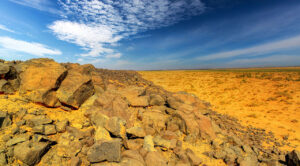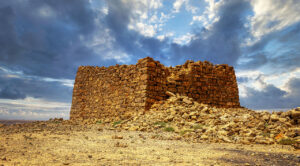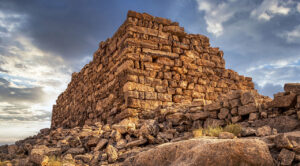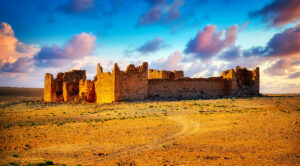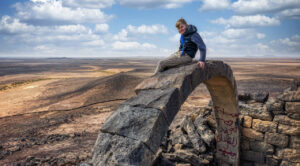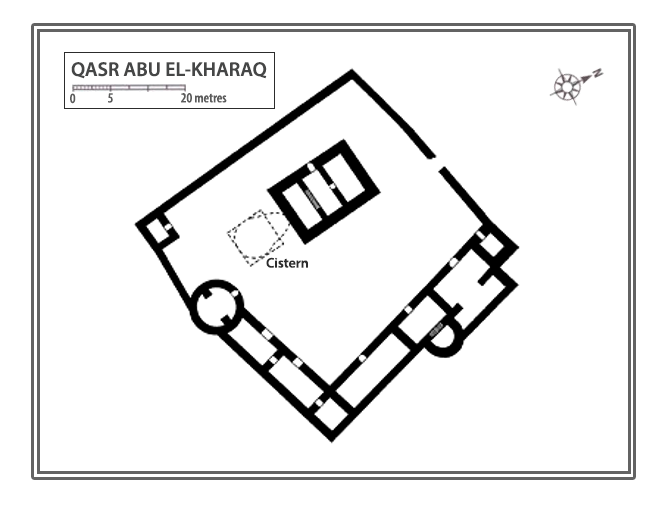Qasr Abu el-Kharaq is a watchtower that originally belonged to the defence system of the kingdom of Nabataea (150 BC – 105 AD) and was later used by the Roman army to secure the eastern desert border of their Arabia province and was part of Limes Arabicus frontier. The well-preserved architectural monument is located 3 km northwest of the Qasr Bshir, another Roman castle and along with the watchtower Qasr el-Al, had visual contact with both of them in the open desert landscape.
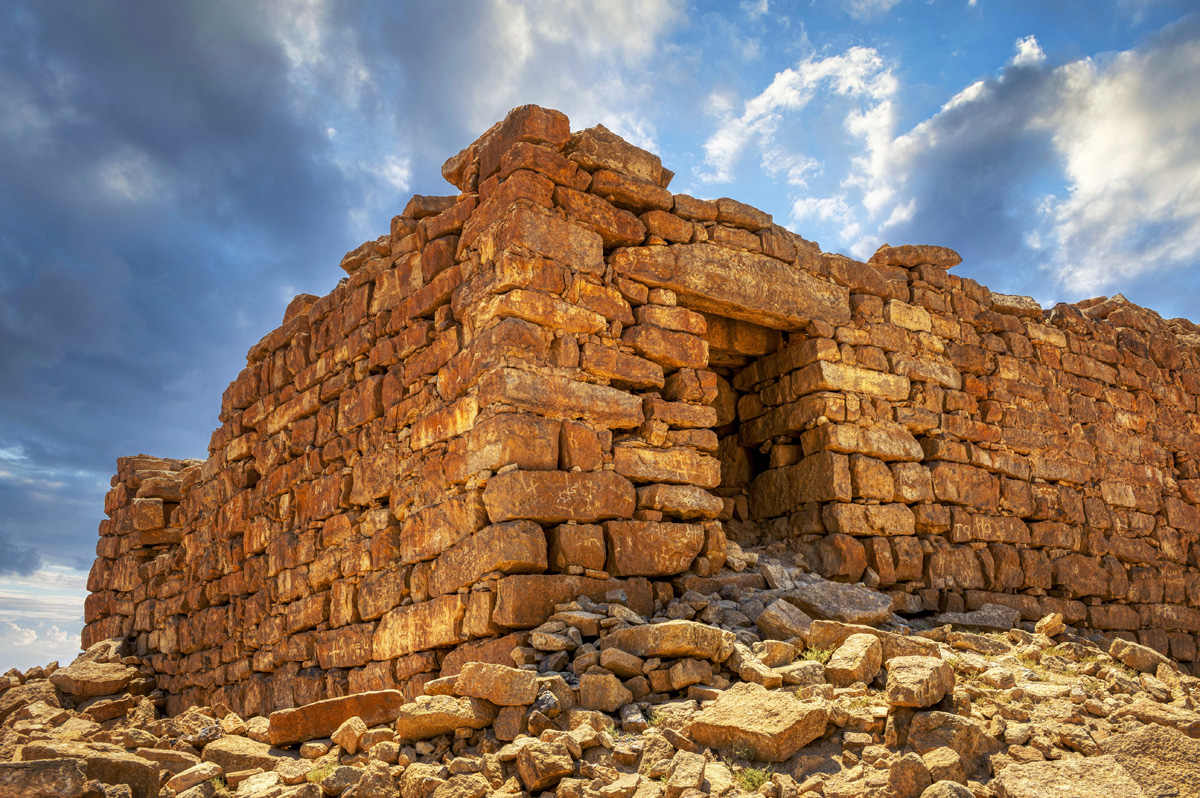
The Qasr is located on a hill from which an excellent view of the surrounding land is possible, which is characterised by a wide, slightly hilly plain in the Jordanian territory, the size of which is around 8,000 square kilometres. The table landscape around the fort is crisscrossed by numerous flat small wadis, all of which drains west into Wadi Mujib when there is rare rainfall, which is typical of desert environments.
The rectangular building covers 22 × 18 m and is oriented from the south-southwest to the north-northeast. The exterior walls inclined towards the inside of the tower are a noticeable structural element. Near the east end of the northern outer wall, there is an access that has remained intact to this day. According to Glueck (the biblical archaeologist 1900–1971), its slightly elevated position above the top of the site could indicate that there may originally have been a ledge and steps in front of this access.
At the best-preserved corner of the tower, which is at the north wall, Glueck still counted 22 preserved layers and thus a preserved height of over eight meters. The partly irregularly placed dry stone masonry consists of roughly cut quarry stones and most of the different sized hand blocks. Glueck also found remains of plaster, especially on the south side, which is also well preserved. With the plastering, the joints between the individual stone settings were also filled. To stabilise the masonry, special cornerstones were used at the corners. According to Glueck, the western outer wall still had 23 layers. At its southern end, near its foot, the archaeologist observed a small opening that led to an underground passage that turned north. Since debris blocks the further course of this corridor, its destination remains unknown.
Glueck noticed traces of a square-shaped inner courtyard with further building structures around the Qasr, which surrounded the watchtower on three sides. The British archaeologist David Leslie Kennedy, who stated this enclosure, which was classified as structurally possibly older, with a size of around 60 × 60 meters, was able to add in 1990 that the younger watchtower had been placed against the north wall of this enclosure.
Today Qasr Abu el-Kharaq can be visited by 4×4 or crossover vehicle in conjunction with Qasr Bshir and Qasr El-Al from Desert highway. Don’t be alarmed if you find bones here and there, most of them are not human.
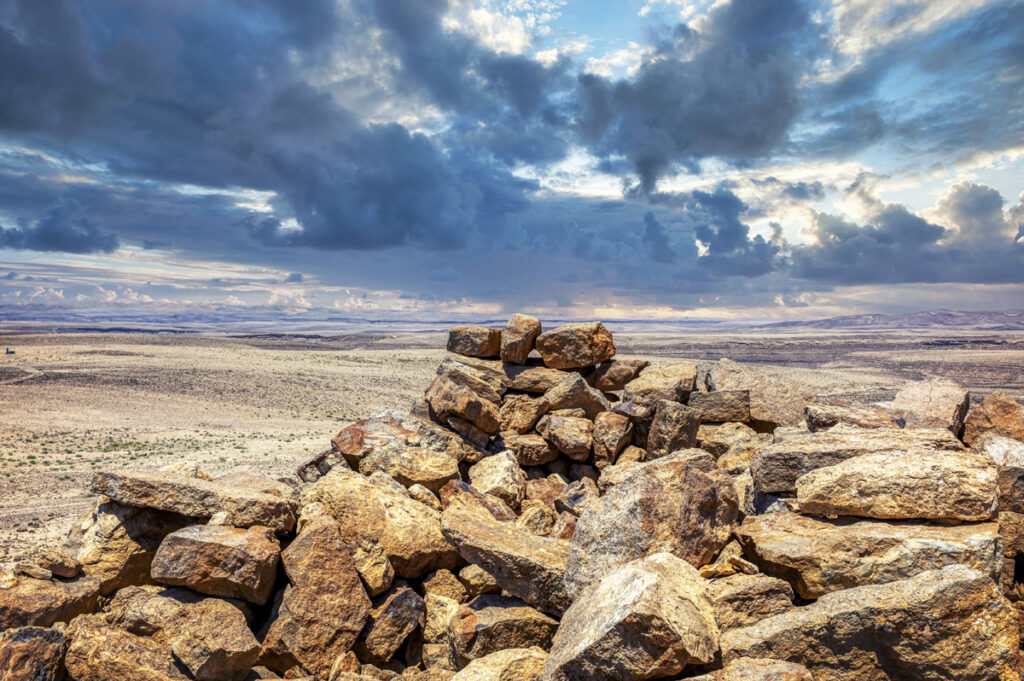
The Roman watchtower was constructed in the 4th century AD as part of a defence mechanism inside and against the north wall of an earlier, larger Nabatean site.
The biblical archaeologist Nelson Glueck (1900–1971), who visited many buildings on the Roman Limes in Jordan in the second half of the 1930s, paid a brief visit to the watchtower in 1936. Despite these and other early studies, the Limes in present-day Jordan was one of the least studied border regions of the Roman Empire in the period that followed until the early 1980s. The decisive contribution to the modern research of the late antique Limes Arabicus was made by the investigations of the American provincial Roman archaeologist Samuel Thomas Parker who undertook archaeological expeditions with a team of scientists from 1980 to 1989. As head of the Limes Arabicus Project, he focused on the Roman border in central Jordan.
During his visit, Glueck found small quantities of Nabatean ceramic fragments, including a piece of sigillata. The largest proportion of broken fragments was classified in the Iron Age II (1000-586 BC) and the Nabatean / early Roman periods. But even in the late Roman and early Byzantine times, the tower was occupied again and again.
